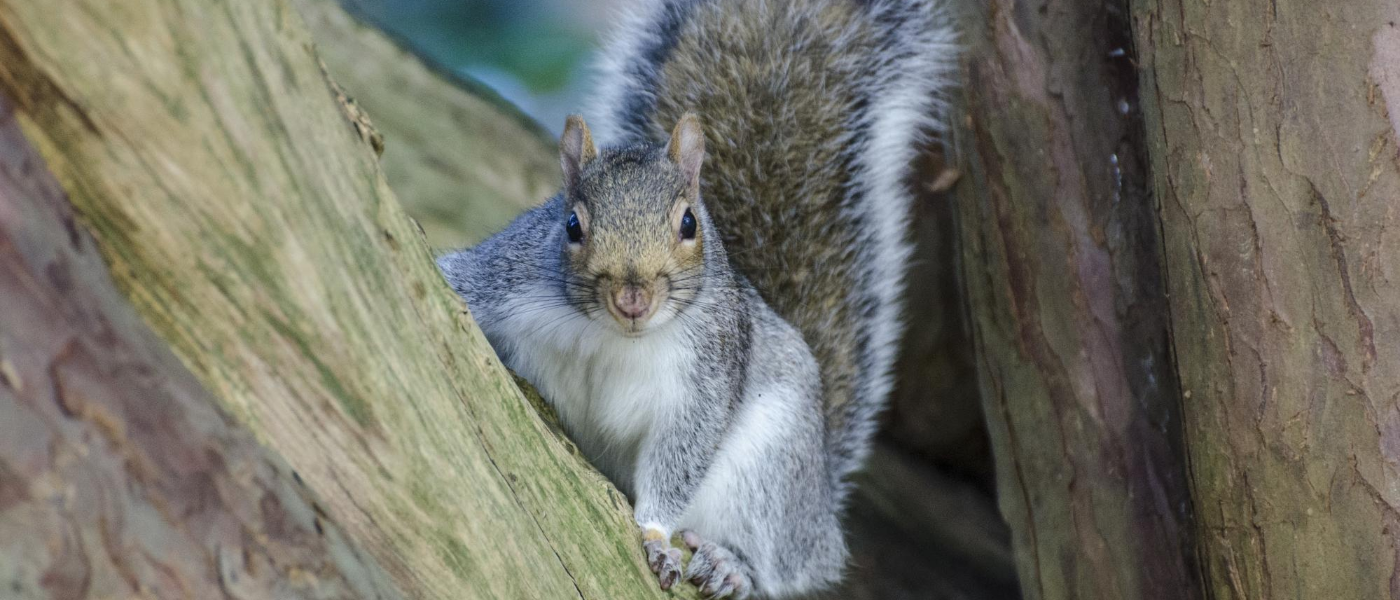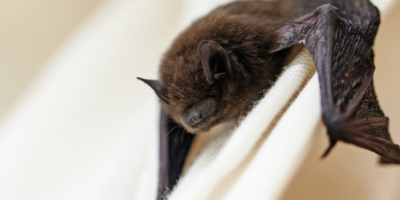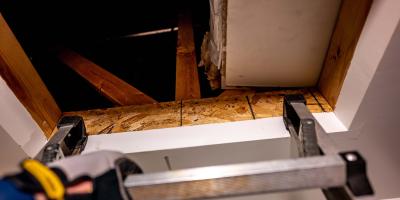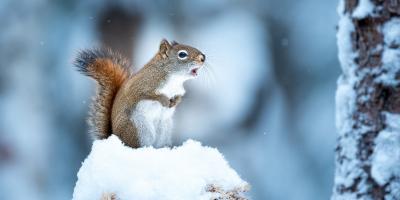The Key to Successful Squirrel Removal: Preparation

While you’ve been busy squirreling away holiday savings and looking forward to a festive season, you’re not the only one building up a winter stash. Your neighborhood squirrels have been hard at work, gathering acorns and nuts for their own little holiday feast. And as the temperatures continue to plummet the closer we get to New Year’s Day, they’re eyeing that warm fire blazing in your hearth, too.
Unlike many other northern creatures such as skunks, groundhogs and, of course, bears, most squirrels don’t hibernate. At least not those of the gray, red or flying varieties that thrive in the northeast. No, they continue to trample the snow-laden ground all the way through until spring, motivated, just like us, for a warm, comfortable place to weather the cold. Unfortunately, for New Englanders, that oftentimes means in your home.
Squirrel Signals
The first sign you’ve got squirrels is usually the sound of scampering above your ceiling, most often during the day. These are the sounds of gray or red squirrels coming and going as they collect and store their winter bounty. Sometimes they might even rundown between your walls, in which case you’ll hear the scratching coming from every direction. In the case of flying squirrels (which are nocturnal, unlike their ground-level cousins), you’re more likely to hear them at night, and at lower volume as they’re much smaller than gray or red squirrels.
Hearing the noises during the day is usually a telltale sign that you’re dealing with squirrels as opposed to, say, racoons or rats, which are nocturnal. However, considering that the less-common (but still relevant) flying squirrel prefers evening flights, the time of day you hear the activity cannot rule out the possibility of squirrels entirely. If you want confirmation, spend a little time in your yard observing the exterior of your house, especially around any gutters. Look for holes or openings, even small ones, on or near soffits, vents, plumbing stacks, chimneys and dormers. If you’ve got an infestation of squirrels, it probably won’t be long before you see one pop in or out.
Another place you can check that you’re almost certain to see evidence? You guessed it: the attic. Regardless of the pest species or their sleeping schedule, you’ll be certain to see plenty of evidence of their presence just by looking at the condition of your insulation (i.e. their new bedding, latrine and maternity ward). At that point, it’s better to have a trained wildlife professional assess the damage and identify the intruder for sure.
A Worrying Situation?
Squirrels themselves aren’t generally a threat to human health, although they do carry diseases such as tularemia, typhus, plague and Dermatophytosis. They can also be riddled with parasites like fleas, ticks and mites, all of which are attracted to humans as well and are vectors for Lyme disease, encephalitis and Rocky Mountain spotted fever.
It’s not the likelihood of suffering a bite from a squirrel or one of its parasites, but the risk of inhaling toxins released from the squirrels’ urine and fecal matter that poses the greatest risk to human health and safety. Both can potentially build up in your home when the squirrels nest, putting residents at risk.
Not to mention, squirrels can wreak havoc on your home’s structure, most commonly by gnawing through wires and tearing up insulation for their nests, which can block vents and cut off air flow, resulting in mold, mildew and poor air circulation.
Take a Stand Against Squirrels
More than likely, you’re going to have to call a wildlife control professional to safely and humanely remove the squirrels from your dwelling, especially if you live in an area with laws about live animal removal. That said, there are still some things you can do to prepare your home and make it less appealing or accessible to them and other critters.
First, trim any tree branches that come within six feet of your home. Cover or repair any chimneys or vents with mesh (which will also keep leaves and other debris from clogging them or causing a fire hazard). If you discover any major structural issues while inspecting for squirrels, like cracks or holes, you’ll obviously want to take care of those as well.
A pest control professional will be sure to look out for the safety and well-being of any squirrels who’ve nested in your home, including looking out for any babies that might not yet be weaned and, therefore, cannot survive without their mothers. A pro will know how to safely remove them, as well as any adult squirrels, ensuring your home is protected against any further infestation.
Visit our page on squirrel control to request a free quote and schedule your professional squirrel exclusion service.



